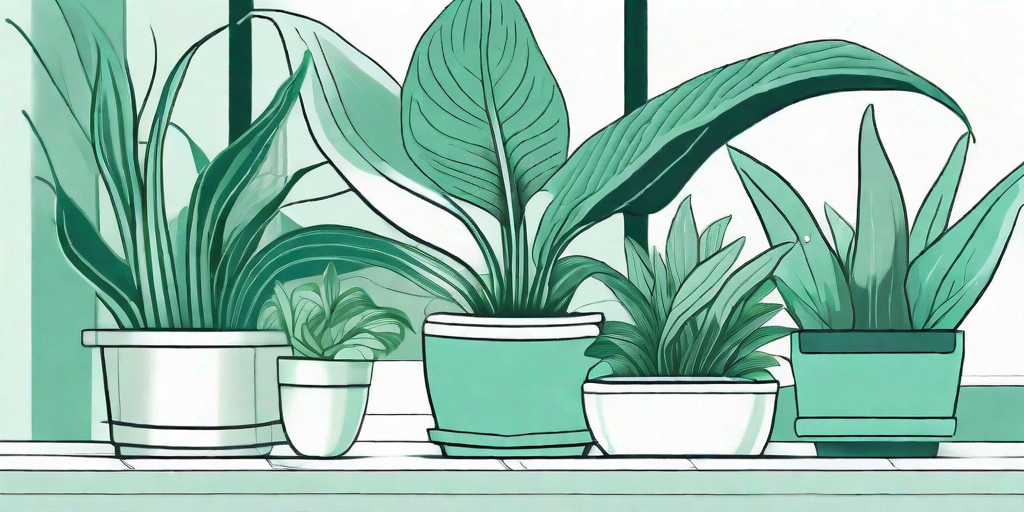
Ah, the Hosta plant, the darling of the shade garden, the belle of the woodland ball. You've seen them in your neighbor's yard, and you've admired them from afar. But did you know that you can grow these leafy lovelies indoors? Yes, you heard it right! No need to brave the elements to enjoy their lush, verdant beauty. So, grab your gardening gloves, your favorite pot, and let's get down to business.
Understanding Hostas: The Basics
Before we dive into the nitty-gritty of indoor Hosta cultivation, let's take a moment to appreciate these plants for what they are. Hostas, also known as Plantain Lilies, hail from the family Asparagaceae. They're native to Northeast Asia but have made themselves quite at home in gardens across the globe. They're known for their large, heart-shaped leaves that come in a variety of colors, from deep green to blue to variegated. But enough about their resume, let's get to know them on a more personal level.
Hostas are shade-loving plants that thrive in cool, moist environments. They're not big fans of direct sunlight, which can scorch their leaves and hurt their feelings. They're also perennials, which means they'll come back year after year, like that one relative who always overstays their welcome at family gatherings. But unlike your Uncle Bob, Hostas are always a welcome sight.
Indoor Hosta Cultivation: A Step-by-Step Guide
Now that we've gotten to know our leafy friends a bit better, let's talk about how to grow them indoors. It's not as daunting as it sounds, I promise. All it takes is a bit of patience, a dash of TLC, and a sprinkle of green thumb magic.
Step 1: Choosing the Right Hosta
Not all Hostas are created equal, especially when it comes to indoor cultivation. Some varieties are better suited to life indoors than others. Look for smaller varieties, like 'Blue Mouse Ears' or 'Golden Tiara'. These compact cultivars won't take over your living room and are more likely to thrive indoors.
When choosing your Hosta, look for plants with healthy, vibrant leaves. Avoid plants with yellow or brown spots, as these could be signs of disease or pest infestation. Remember, a healthy Hosta is a happy Hosta!
Step 2: Potting Your Hosta
Once you've chosen your Hosta, it's time to get it settled in its new home. Choose a pot that's large enough to accommodate your Hosta's root system, with room to grow. Make sure the pot has good drainage to prevent waterlogging. Nobody likes wet feet, not even Hostas.
Fill the pot with a good quality potting mix, preferably one that's rich in organic matter. Hostas are heavy feeders and appreciate a nutrient-rich soil. Place your Hosta in the pot, making sure the crown (the point where the leaves meet the roots) is level with the soil surface. Then, fill in around the roots with more potting mix, firming it gently with your fingers.
Step 3: Caring for Your Indoor Hosta
Now that your Hosta is all cozy in its new pot, it's time to talk about care. Hostas are pretty low-maintenance plants, but they do have a few specific needs.
Firstly, light. Remember, Hostas are shade-lovers. They prefer bright, indirect light. A north or east-facing window is ideal. Just make sure to protect them from harsh afternoon sun, which can cause leaf burn.
Secondly, water. Hostas like their soil to be consistently moist, but not waterlogged. Water your Hosta when the top inch of soil feels dry to the touch. Be careful not to overwater, as this can lead to root rot.
Finally, feeding. Feed your Hosta with a balanced, slow-release fertilizer in the spring and again in mid-summer. This will help keep your Hosta healthy and promote lush, vibrant growth.
Common Hosta Problems and How to Solve Them
Like all plants, Hostas can sometimes run into problems. But don't worry, most issues are easily resolved with a bit of know-how.
Yellowing Leaves
If your Hosta's leaves are turning yellow, it could be a sign of overwatering. Check the soil. If it's waterlogged, let it dry out a bit before watering again. If the problem persists, you may need to repot your Hosta in fresh, well-draining soil.
Brown Spots
Brown spots on your Hosta's leaves could be a sign of a fungal infection. Try reducing humidity and improving air circulation around your plant. If the spots continue to spread, you may need to treat your Hosta with a fungicide.
Leaf Scorch
If your Hosta's leaves are looking scorched or bleached, it's probably getting too much sun. Move your Hosta to a shadier spot and monitor it closely. The damaged leaves won't recover, but new growth should be healthy.
Frequently Asked Questions
Still have questions? Don't worry, we've got answers. Here are some of the most frequently asked questions about growing Hostas indoors.
Can all varieties of Hostas be grown indoors?
While it's technically possible to grow any variety of Hosta indoors, some are better suited to indoor cultivation than others. Smaller, compact varieties tend to do better indoors than their larger counterparts.
How often should I water my indoor Hosta?
Hostas like their soil to be consistently moist, but not waterlogged. Water your Hosta when the top inch of soil feels dry to the touch.
Do indoor Hostas need a winter dormancy period?
Yes, Hostas are perennial plants and need a period of winter dormancy to thrive. During this time, reduce watering and allow the plant to rest.
Conclusion
So there you have it, the complete guide to growing Hostas indoors. With a bit of care and attention, you can enjoy these beautiful, shade-loving plants all year round, no garden required. So why wait? Bring the outdoors in and start your indoor Hosta adventure today!















